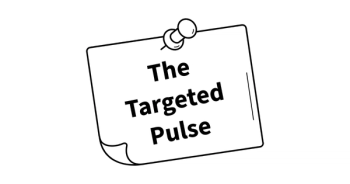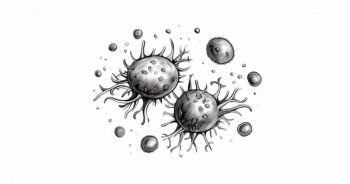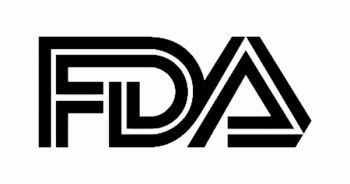
Durable PFS and OS Rates Maintained for Fixed-Dose Ibrutinib/Venetoclax in CLL/SLL
The CAPTIVATE trial reveals long-term survival benefits of fixed-dose ibrutinib plus venetoclax for chronic lymphocytic leukemia patients, including high-risk groups.
The final analysis of the CAPTIVATE trial (NCT02910583) revealed that fixed dose ibrutinib (Imbruvica) plus venetoclax (Venclax) continued to have durable progression-free survival (PFS) rates and overall survival (OS) rates with long-term follow-up in patients with chronic lymphocytic leukemia/small lymphocytic lymphoma (CLL/SLL), including patients with high-risk genomic features. Findings were presented during the
After a median follow-up of 68.9 months (range, 0.8-83.9), PFS and OS rates were 66% (95% CI, 58.0%-72.0%) and 97% (95% CI, 93.0%-99.0%), respectively. At 5.5 years, PFS rates in patients without and with del(17p)/mutated TP53 were 70% (95% CI, 62.0%-76.0%) and 36% (95% CI, 17.0%-55.0%), respectively.
Among patients with unmutated IGHV, the 5.5 year PFS rate was 55% (95% CI, 45.0%-64.0%), with further stratification showing 63% (95% CI, 49.0%–74.0%) in those without del(17p)/mutated TP53/complex karyotype and 44% (95% CI, 28.0%–60.0%) in those with these risk factors. In contrast, patients with mutated IGHV had higher PFS rates overall (79%; 95% CI, 68.0%–87.0%), particularly those without high-risk features (85%; 95% CI, 71.0%–93.0%), though the rate dropped to 62% (95% CI, 34.0%–81.0%) for those with concomitant genomic abnormalities.
“This analysis demonstrates long-term outcomes and data for patients treated with a combination of ibrutinib plus venetoclax, demonstrating excellent outcomes for these patients receiving fixed duration treatment,” William Wierda, MD, PhD, Endowed Distinguished Professor Jane and John Justin Distinguished Chair in Leukemia Research in Honor of Dr. Elihu Estey, Department of Leukemia, Division of Cancer Medicine, and deputy Department Chair, Department of Leukemia, The University of Texas MD Anderson Cancer Center, Houston, Texas, said during a presentation of the data. “The median overall progression-free survival and overall survival have not been identified or determined with this long-term follow-up.”
Patients in the fixed-dose (FD) arm (n = 159) with previously untreated CLL/SLL received 3 cycles of ibrutinib, then 12 cycles of ibrutinib/venetoclax. Patients in the MRD arm (n = 43) received 3 cycles of ibrutinib, followed by 12 cycles of ibrutinib/venetoclax.
Undetectable MRD (uMRD4; at <10–4 by flow cytometry) was achieved in peripheral blood (PB) in 54% of patients at cycle 7 and 69% at end of treatment, and in bone marrow in 69% of pts at the end of treatment. The 5.5 year PFS rates were higher in patients with uMRD4 in PB at end of treatment (75%; 95% CI, 67.0%-82.0%) vs those with MRD (47%; 95% CI, 33.0%-59.0%).
Disease Progression
Of 64 patients who experienced disease progression after completing fixed-duration therapy, the 5.5-year freedom from next-line treatment was 73% (95% CI, 66.0%–79.0%). Among 40 evaluable post-progression samples, only 1 harbored a BCL2 mutation (A113G, VAF 8.3%); no BTK or PLCG2 resistance mutations were detected.
“Thirty-six patients required re-treatment,” Wierda said. “Twenty-five received ibrutinib monotherapy, primarily those progressing within 2 years of treatment completion, whereas 11 received combination therapy.” Median follow-up for re-treated patients was 27 months and 13.8 months, respectively.
Baseline and Safety
The median age of retreated patients was 58.5 years (range, 39.0–71.0), with most being male (67%) and having unmutated IGHV (78%). Bulky lymphadenopathy (≥5 cm) was present in 31% of cases.
Retreatment safety profiles were consistent with prior data. Any-grade adverse events (AEs) occurred in 88% of patients treated with ibrutinib monotherapy and 100% of combination recipients. Common AEs included COVID-19 (24% vs. 18%), diarrhea (20% vs. 36%), and hypertension (20% vs. 45%). Grade 3/4 AEs were reported in 36% of both groups, with 1 discontinuation in the monotherapy arm and no dose reductions due to toxicity.










































